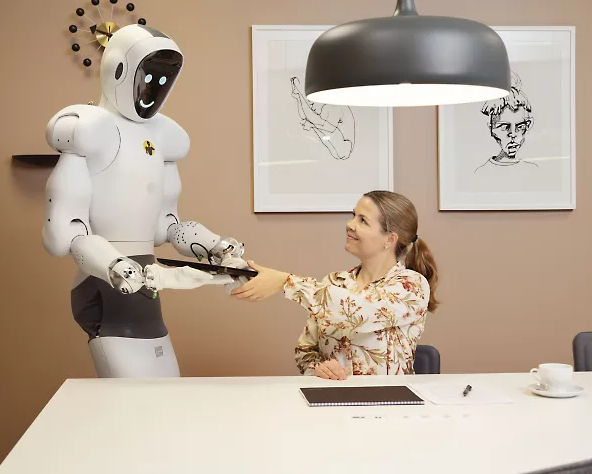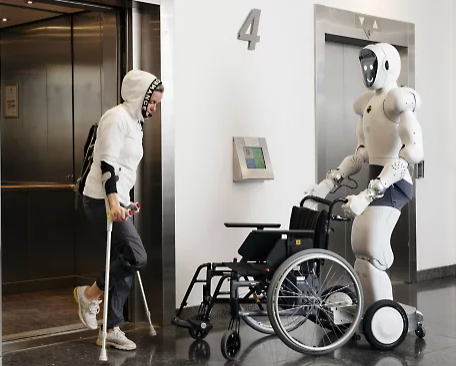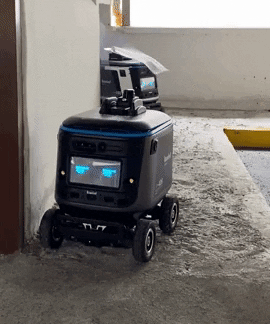Introduction to Robotics’ Nonlinear Control and Planning
Why should engineers be concerned with nonlinear control and planning in robotics? Well, consider yourself a systems engineer tasked with creating a environment that can move through a landscape that is filled with hazards.
Imagine that the terrain’s circumstances are constantly shifting. What would you have to do to make sure your robot is capable of handling any circumstance it comes across?
In this article, we’ll look at the idea of nonlinearity and how it might provide problems for engineers working on robotic systems. We’ll also go over some strategies for getting beyond that obstacle.

Nonlinearity in Robotics
Assume you are in charge of a robot. When you release it into the environment, it immediately begins to move and carry out your instructions.
Then, though, something unexpected occurs. The robot starts to stray from its intended path and move in an unexpected direction. How do you behave?
If you’re like most individuals, panic is what comes to mind first. You won’t be able to restart your robot with it, though. Discovering the nonlinearity’s cause will help you develop a solution to deal with it.
Additionally, the emphasis here is on applications to robotic systems that are characterized as underactuated mechanical systems that are subject to limitations like environmental barriers.

Why Does Robotic Nonlinearity Present a Challenge?
Nonlinearity is one of the main problems you can run against in robotics. In essence, nonlinearity occurs when a system’s output is not proportionate to its input. It is not a straight line, in other terms.
What makes this such a big deal, then? Because your robot will encounter numerous issues if it tries to navigate a nonlinear terrain. For instance, it might be unable to maintain its course or might find itself caught in a loop.
It’s not always simple to deal with these kinds of abnormalities in planning and control systems for robotics. However, you can get past any challenge given by nonlinearity if you have the appropriate resources and methods in place.
Overcoming Nonlinearity in Robotics
There are a few options available for nonlinear control and planning in robotics:
You could attempt to linearize the system, a method that makes nonlinear systems resemble linear ones. Methods either implicit or explicit can be used to accomplish this.
When using implicit methods, a forward model is computed and utilized to forecast the system’s future state. Contrarily, explicit approaches entail the precise calculation of the system’s reaction to input signals. Both of these approaches, nevertheless, have their shortcomings and frequently produce inaccurate results.
So, what should engineers do to account for the nonlinearity of your system? You can start by using feedback linearization. In a nutshell, this method makes advantage of feedback control to eliminate flaws in the linear approximation. In comparison to employing a forward model or an explicit method, this strategy is frequently more accurate.

Robotics Planning and Trajectory Control in Nonlinear Systems
As you might have predicted, nonlinearity is a significant obstacle for robotics. After all, a robot’s ability to do tasks in a linear manner is the whole idea of a robot.
The real world, however, is everything but linear, as we are all aware. So how does one go about creating a trajectory when the desired course is everything but simple?
You can use a couple different tactics, I suppose. One is to make on-the-fly path adjustments via feedback control. Another option is to employ something called variable structure control, which gives you some planning freedom.
Finally, there is always the option to incorporate uncertainty using probabilistic approaches when examining issues related to robotics. Engineers can certainly overcome the difficulties brought on by nonlinearity if these techniques are available, and employed.
Robotics Planning and Nonlinear Control using Optimization-based Techniques
The problems caused by nonlinearity in robotics can be solved in a variety of ways.
Control that is based on optimization is a common technique. In order to determine the most effective control actions based on the robot’s current state, mathematical models must be used.
Using this data, feedback signals are then calculated to assist the robot in getting closer to the state that is intended. The strategy can be fairly successful, but it’s vital to keep in mind that it’s frequently computationally demanding, making it challenging to perform in real-time.
Robotic Nonlinear Control and Planning using Model Predictive Control
Robots that use Model Predictive Control (MPC) can overcome the difficulties brought on by nonlinearity.
But what is nonlinearity exactly, and why is it so important for robotics?
In short, systems with nonlinear behavior are unpredictable and challenging to govern.
They are difficult to manage since even a small alteration in the input can have a significant impact on the output. For robots, who must be able to react swiftly and precisely to changes in their surroundings, this can be a serious issue.
MPC is a control algorithm that determines the best possible course of action to accomplish the desired goal while accounting for the nonlinearity of the system. By doing so, enables robots to get beyond the obstacles given by erratic systems and accomplish their targeted objectives.
Constraints | Robotics Nonlinear Control and Planning
A mechanical system’s configuration space is designated by and is considered to be a locally isomorphic, -dimensional manifold. An indication of a configuration is noted as Q.
Additionally, limiting conceivable motions to a dimensional sub-manifold using holonomic (or geometric) constraints.
Linear (Pfaffian) constrain the direction of velocities in a nonholonomic (or kinematic) system, but it is still feasible to attain any configuration in Q.
Nonholonomic constraints cannot be integrated, which means that functions k cannot be found.
Conclusion for Robotics Nonlinear Control and Planning
Although nonlinearity poses a number of difficulties for planning and control in robotics, these difficulties can be solved with proper consideration and planning.
Robot operators may successfully navigate even the most complex nonlinear by taking into account the inherent unpredictability of these systems, creating controllers and planners that are robust to uncertainty, and employing the right feedback mechanisms.
We hope that this article has increased your understanding of nonlinear control and planning in robotics. To learn more about comparable products like Ansys LS-DYNA or related engineering consulting services like Explicit Dynamics Consulting, click the respective links.

